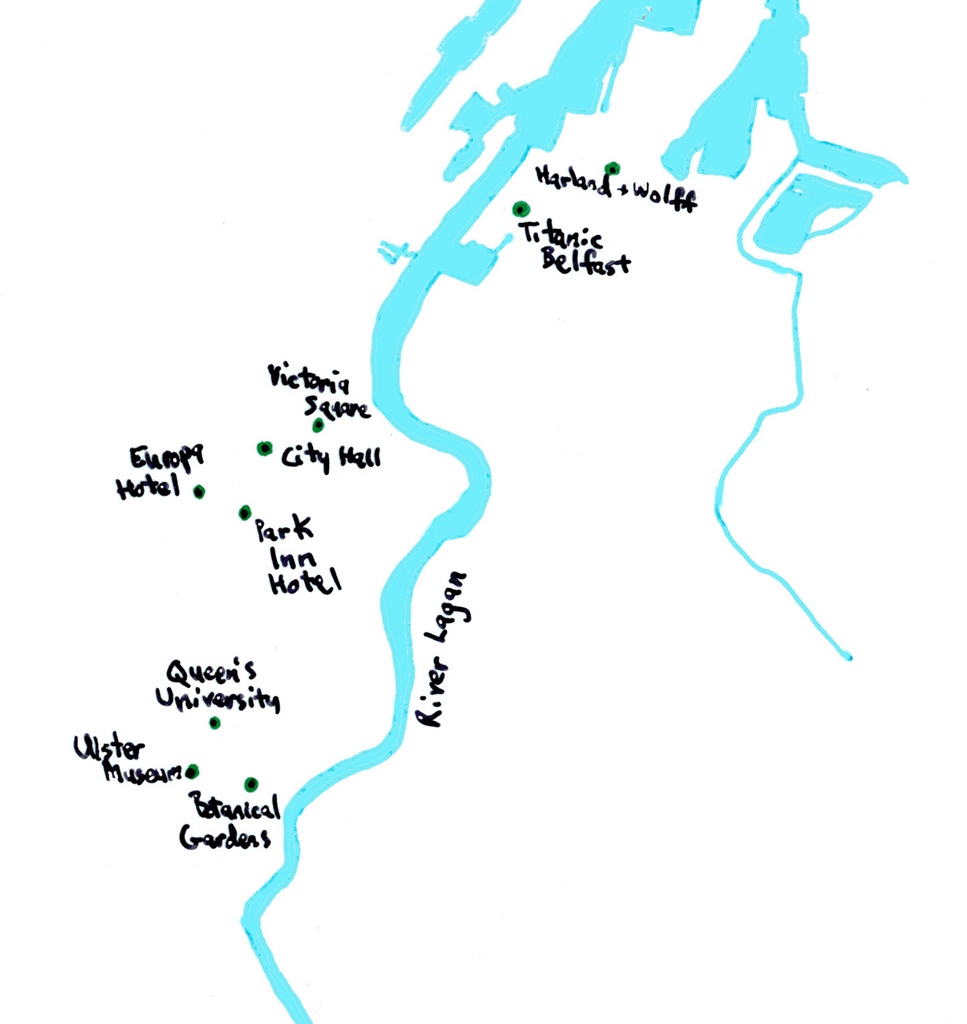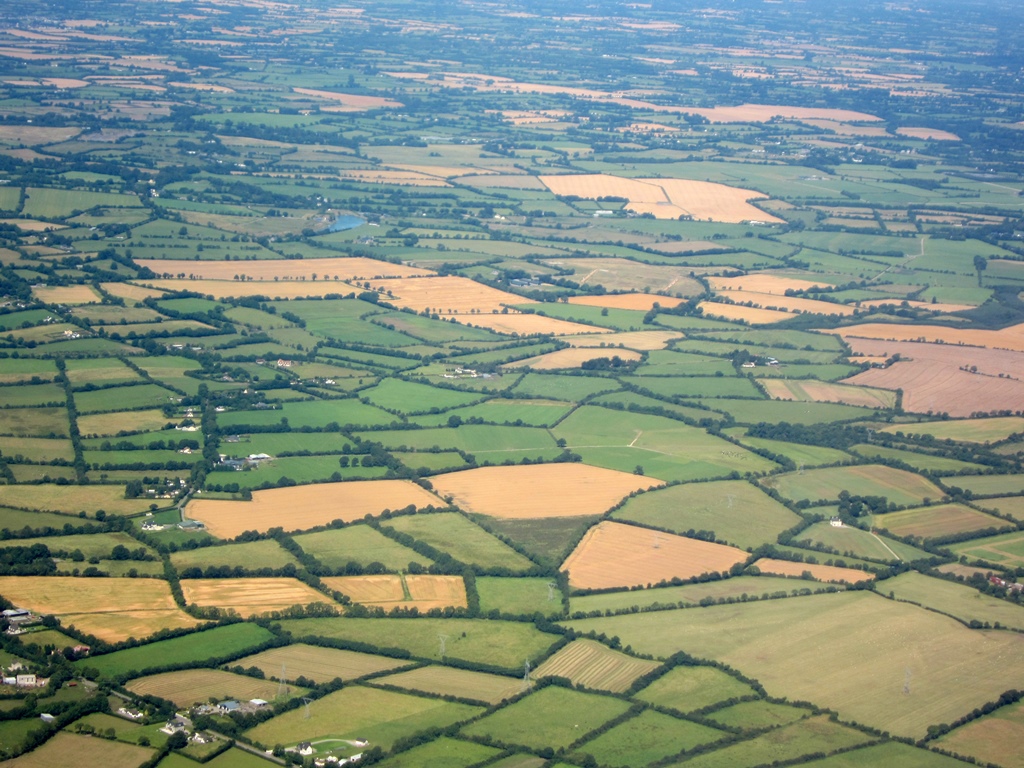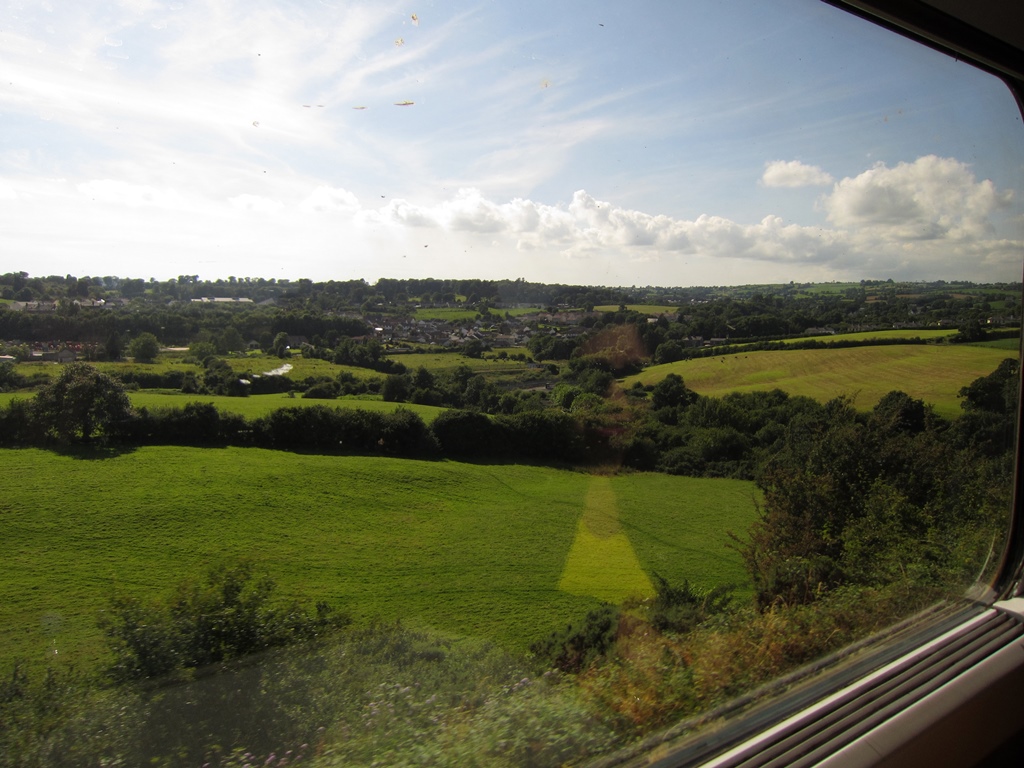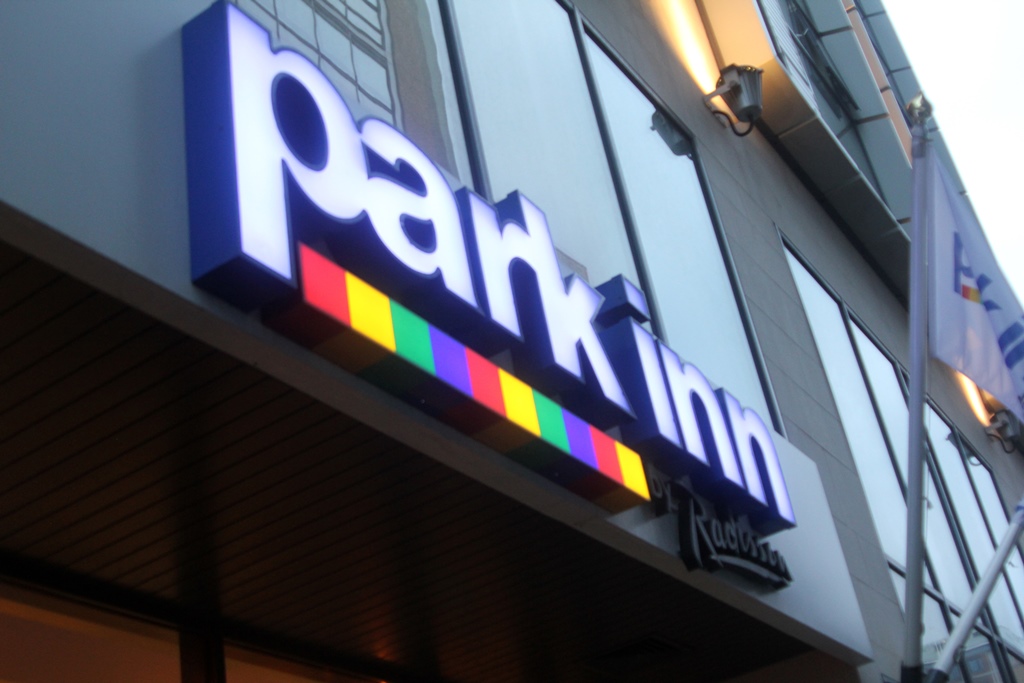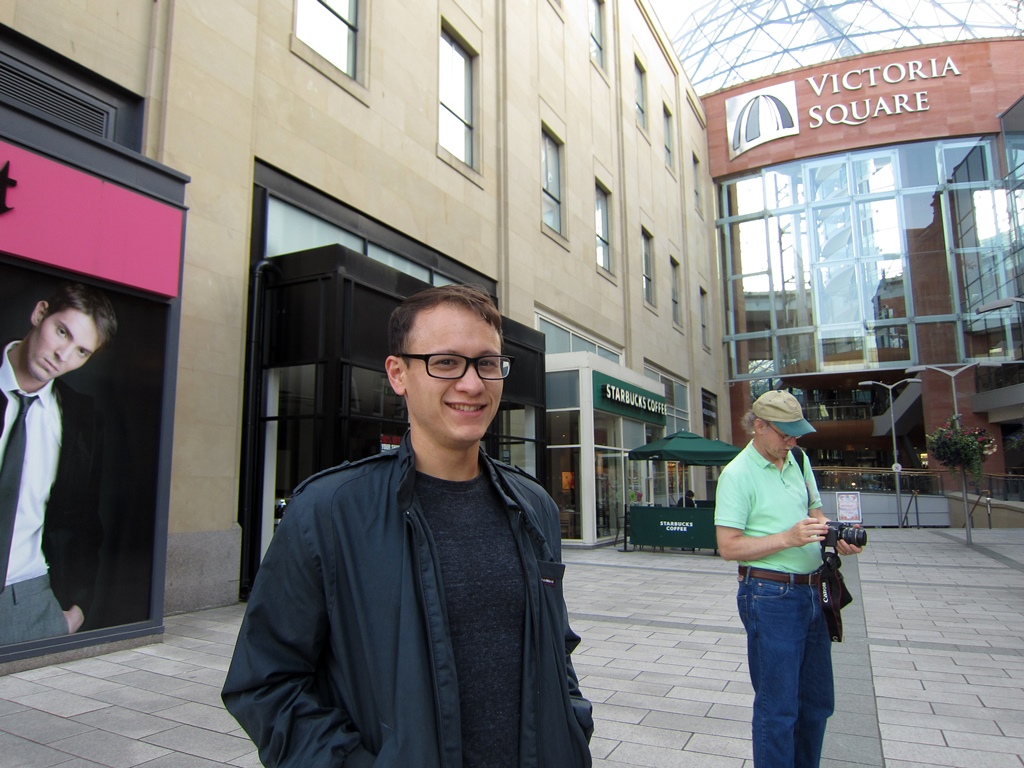Our 2012 trip began with a visit to Belfast, Northern Ireland. Nella and I had always
been interested in visiting Ireland, but hadn't gotten around to it. We'd seen
pictures and movies, and the place looked beautiful. But we were a little worried by
the Emerald Isle's stereotypical reputation as a home to people who like to drink and
fight all the time (activities not normally on our travelling itineraries), and we'd
heard that the weather was usually less than ideal (the reason everything is so green).
However, we found the beauty and history of Ireland to be a powerful draw, and when
planning our 2012 vacation, it seemed that it was time to visit. And when it turned
out that our son Philip would be able to travel with us, and that he was very interested
in visiting Ireland, the destination became obvious. Unfortunately, our daughter Connie
was busy and would not be able to accompany us, but we were happy to have Philip as a
travelling companion.
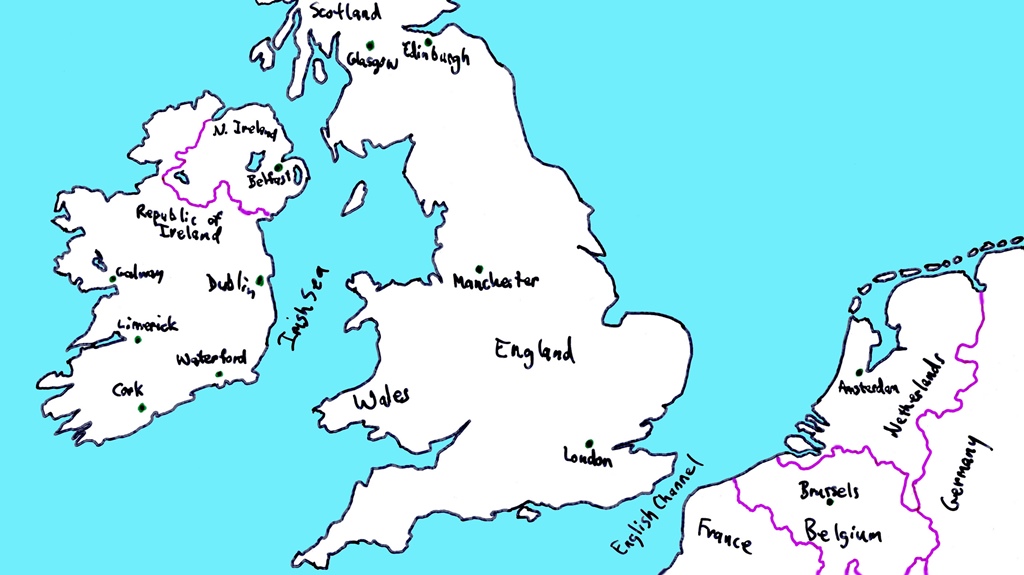
Ireland and Great Britain
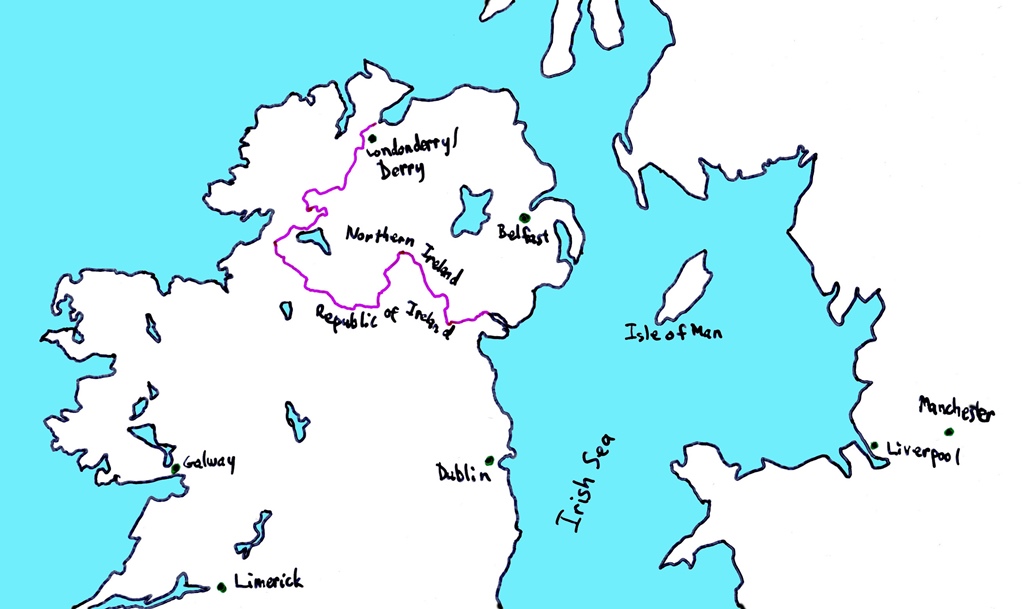
Ireland and the Irish Sea
Belfast is the capital city of Northern Ireland, a part of the United Kingdom
covering the northeast one-sixth of the island of Ireland. Most of the UK
(England/Wales/Scotland) is on another island to the east. Most of Ireland is
the independent Republic of Ireland. Northern Ireland uses the same currency as
the rest of the United Kingdom (British Pounds) and has about the same number of
Protestants and Catholics, while the Republic of Ireland uses Euros and is mainly
Catholic (more than 80%). The entire island was part of the UK until the 1920's.
In 1921 Northern Ireland was split off from the rest of the island by Parliament
to reflect the fact that its interests were considered to be more aligned with
the rest of the UK (due to a population largely descended from British colonists)
than with the rest of Ireland. A year later the rest of the island was cut loose
as the Irish Free State, which eventually became the Republic of Ireland.
Central Belfast
Belfast is located at a spot where two rivers, the Lagan and the Farset, meet and
flow into an inlet called Belfast Lough. Nobody really notices the Farset anymore,
as it was gradually covered over during the 18th Century, and has flowed through an
underground Belfast tunnel since 1804. The Lagan remains a noticeable river, though.
The site of Belfast has been home to human habitation since the Bronze Age, as
determined by the presence of 5000-year-old constructions. The town was not of
particular significance (except to its inhabitants) until the 17th Century, when it
experienced substantial growth. But the city came into its own during the Industrial
Revolution, when it made a name for itself in linen production, heavy engineering and
(especially) shipbuilding. The Harland and Wolff shipyards, located in Belfast,
became one of the largest shipyards in the world for a time. All of the industry
briefly made Belfast the largest city in Ireland, but Dublin has since reclaimed this
title. The industrial activity also made Belfast a prime target for German bombers
during World War II, resulting in much destruction and loss of life.
Further destruction was suffered during the period known as "The Troubles" (the Irish
and British have a talent for understatement), when mostly Catholic
nationalists/republicans were in armed conflict with the mostly Protestant
unionists/loyalists over the issue of whether Northern Ireland should be merged with
the Republic of Ireland. During this period, which extended roughly from 1969 to
1998, more than 3500 people were killed and tens of thousands were wounded or injured.
Violence occurred throughout Northern Ireland, with some spilling into Britain and the
Republic of Ireland, but ground zero was Belfast. In addition to the religious
differences, there is a lot of history behind the tension leading to the Troubles.
The British have occupied Ireland to greater and lesser degrees since the Normans
invaded in 1168, and numerous conflicts have occurred throughout the centuries. The
British treatment of the Irish has at times been heavy-handed (this would be another
understatement), particularly during the time of Oliver Cromwell, and even in the
20th Century, Northern Irish Catholics suffered discrimination at the hands of the
ruling Protestants. In the 21st Century, while the Troubles are generally considered
to have ended, a certain amount of tension still exists, and incidents of violence
still occur occasionally.
A perfect place for a vacation! We actually enjoyed our time in and around Belfast,
as you will see, but first we had to get there. Nella searched the Internet for
flights, but the most reasonable fares could only be found to Dublin, from where we
would have to take a train up to Belfast. She found the best fare and schedule to be
on US Airways, which required a stopover in Charlotte, North Carolina, the US Airways
hub. The terminal in Charlotte turned out to be pretty nice, and we took the
opportunity to sample some of the barbecue being sold there (something we weren't
likely to find in Ireland).
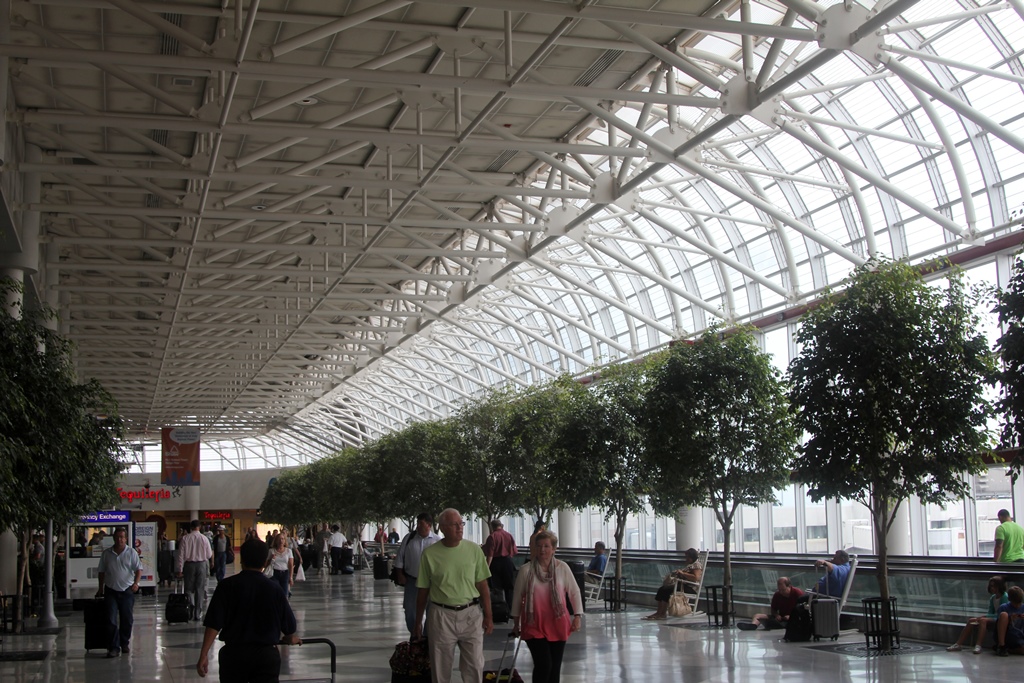
Inside Charlotte Terminal Building
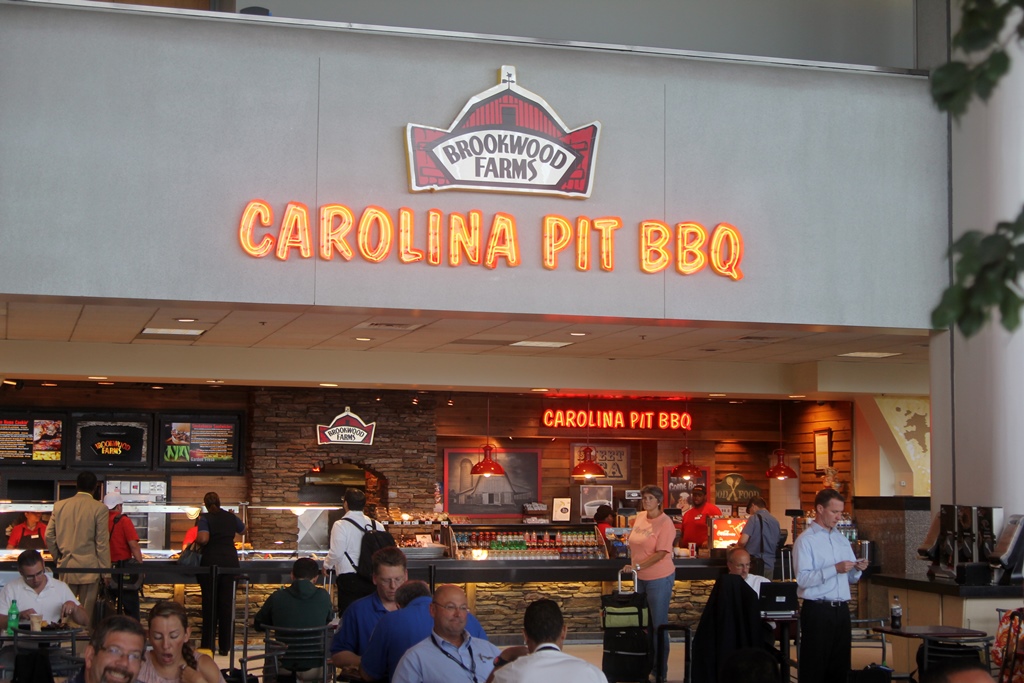
Brookwood Farms Carolina Pit BBQ
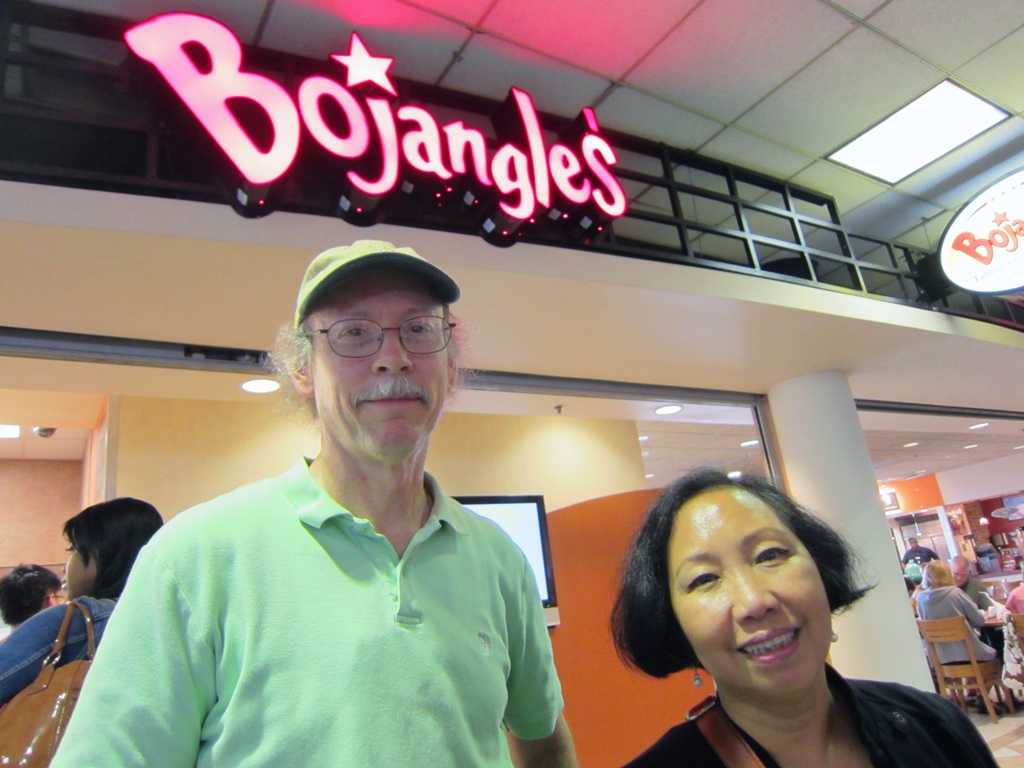
Bob and Nella and Bojangle's
We ended up spending more time in Charlotte than planned. There was a problem
with the first plane they brought us, so we had to wait for them to bring us
another one. Then there was a brief but nasty thunderstorm. After we boarded
the replacement plane, a problem was found with one of the toilets, so we waited
for a repairman to arrive and fix the situation. When he and his assistant
arrived, he was wearing what looked like a haz-mat suit (but was really just
rain gear) with an LED light strapped to his forehead. After some no doubt
delicate adjustments, the toilet was pronounced fit for duty, and our afternoon
flight (which had become an evening flight) was allowed to take off for Ireland.
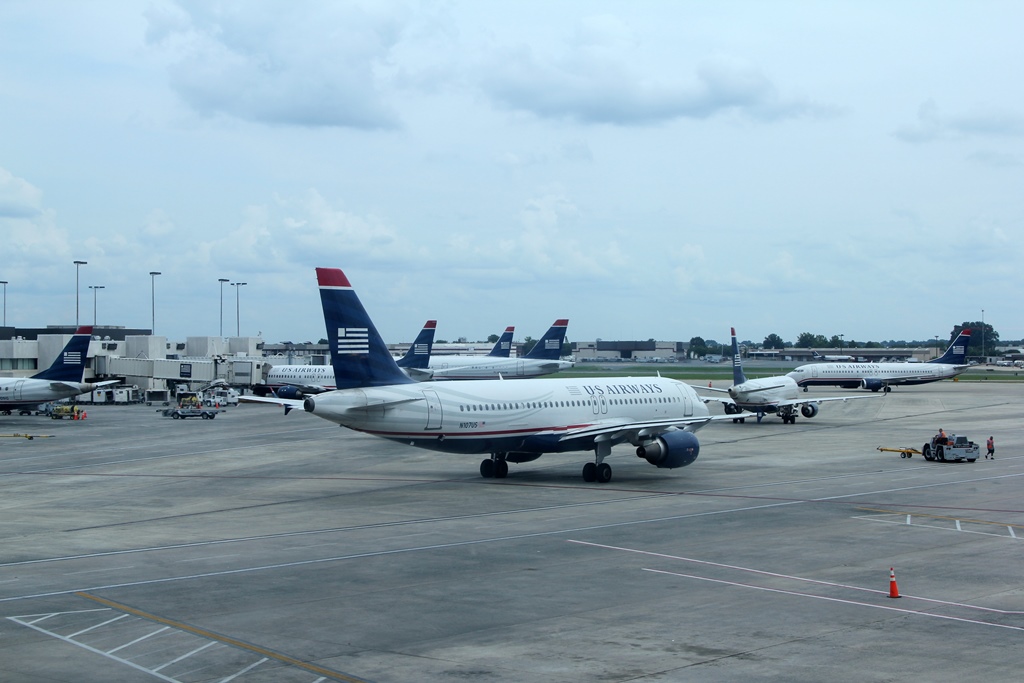
Many US Airways Planes
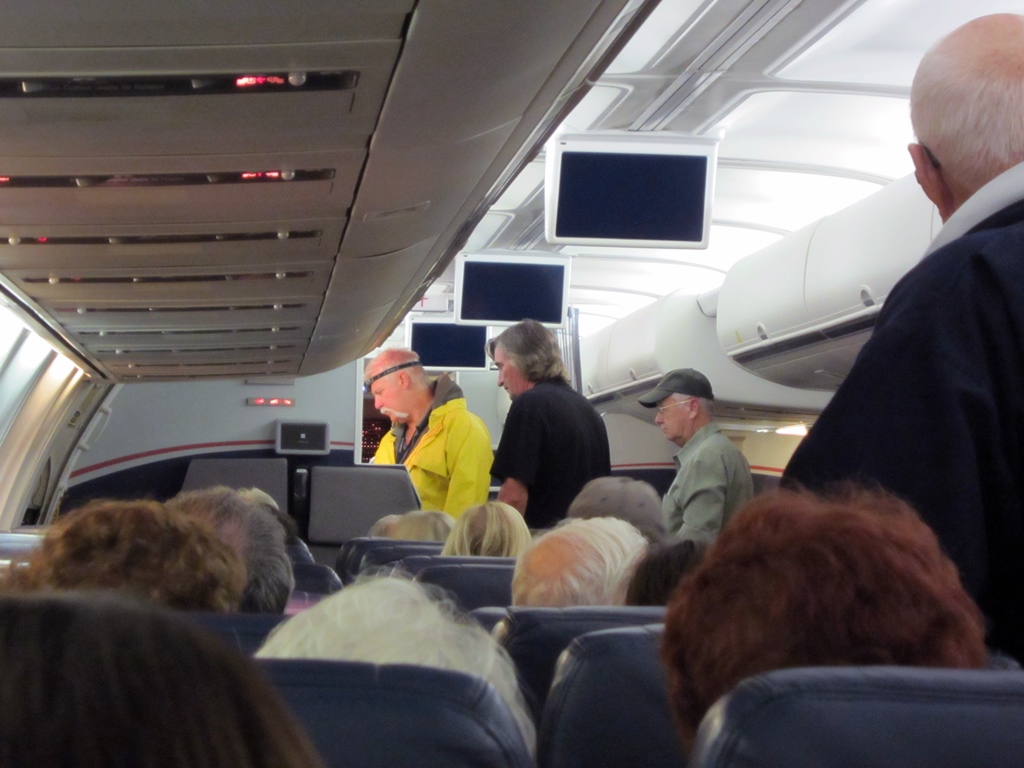
Toilet Repairmen
On arriving In Dublin the following morning, we picked up our luggage and boarded
Airlink bus 747 to Dublin’s Connolly train station, where we had to wait a bit for a
Belfast train (there are eight per day).
Irish Countryside
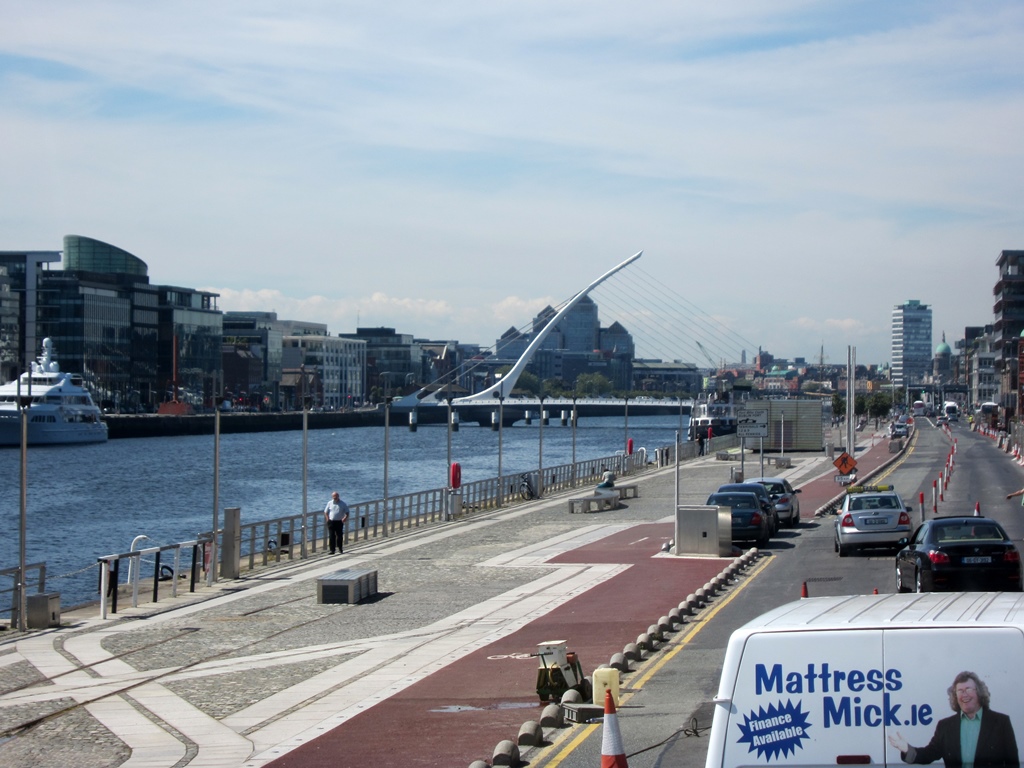
River Liffey, Dublin
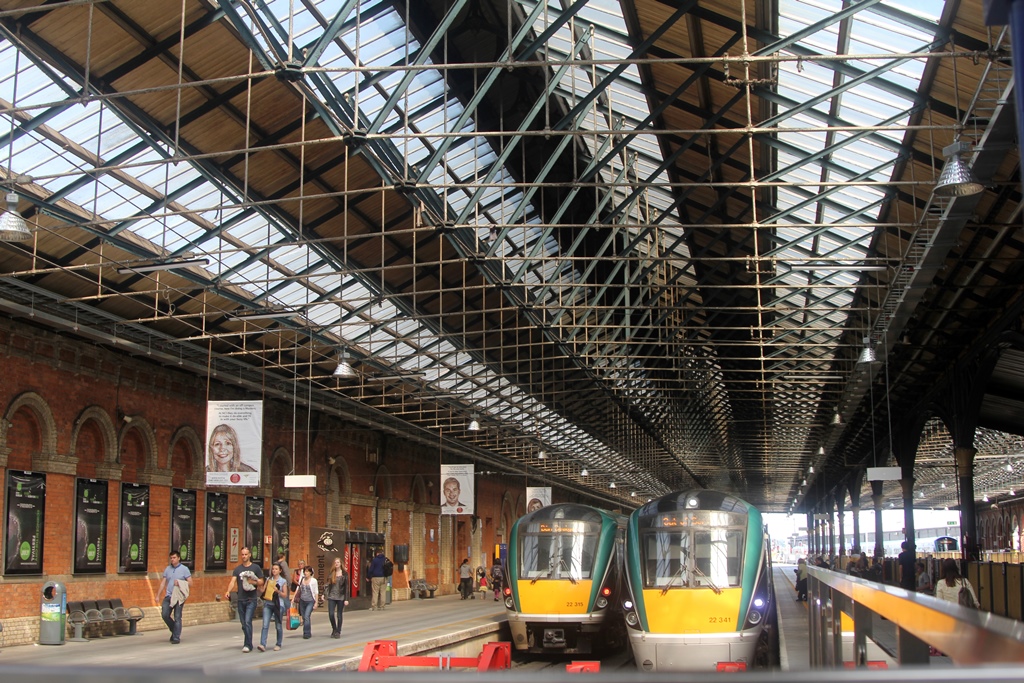
Dublin Train Station
The train took us up to Belfast in about two hours, passing through picturesque towns
and crossing some very green countryside on the way.
Countryside from Train
At the Belfast train station we boarded a Centrelink bus (free with the train ticket)
which took us to a central square with many bus stops, from which our hotel (the
Park Inn by Radisson)
was within walking distance.
Park Inn Hotel
After some rest we went out to explore the area and find some dinner and
stumbled across the Victoria Square
shopping mall, which had a variety of eateries. We settled on a chicken place called Nando's.
Philip and Bob and Victoria Square Shopping Mall
After dinner we returned to the hotel to try to sleep. As usual, we didn't plan
on wasting much time recovering from jet lag. Our first planned stop for the next
day was the Ulster Museum.



